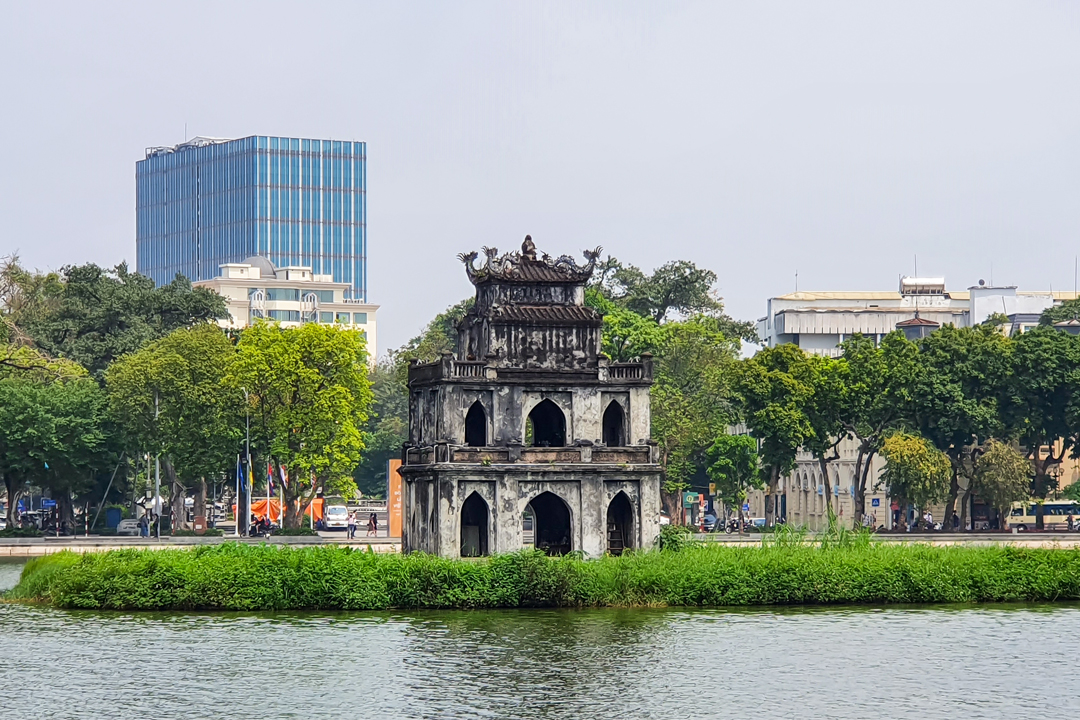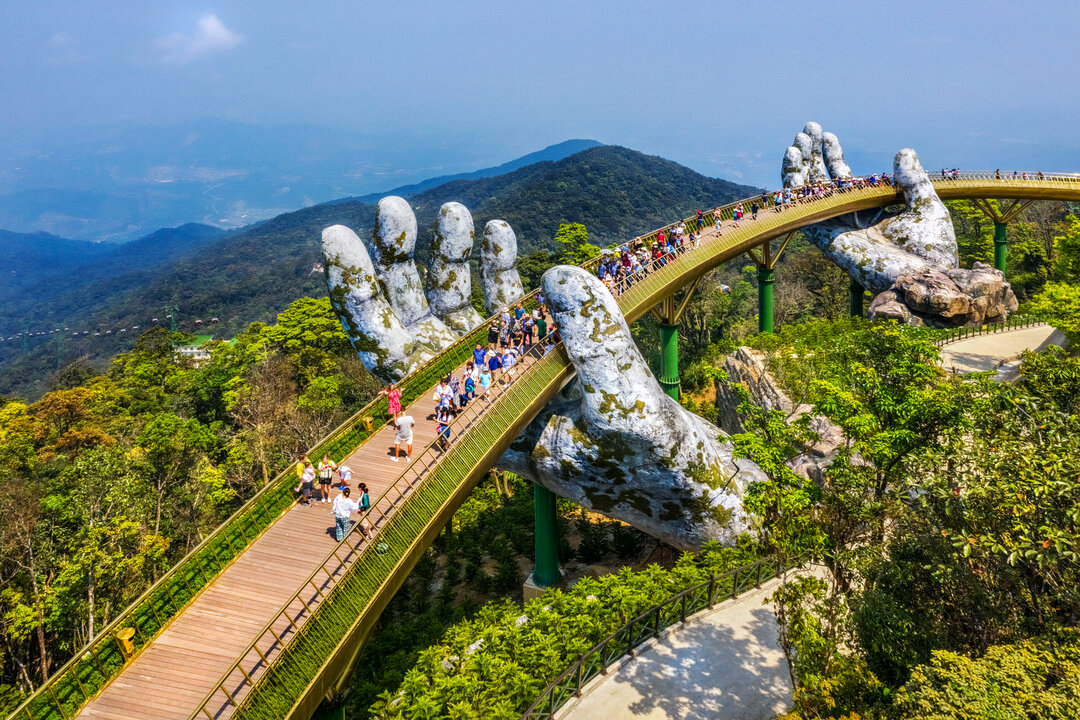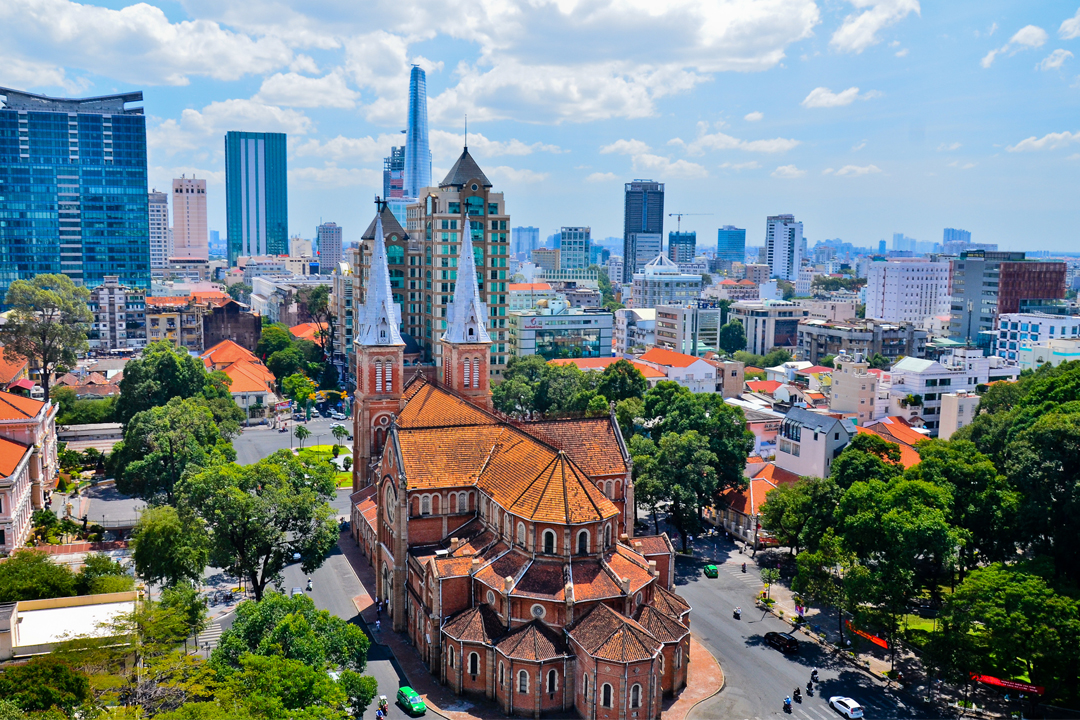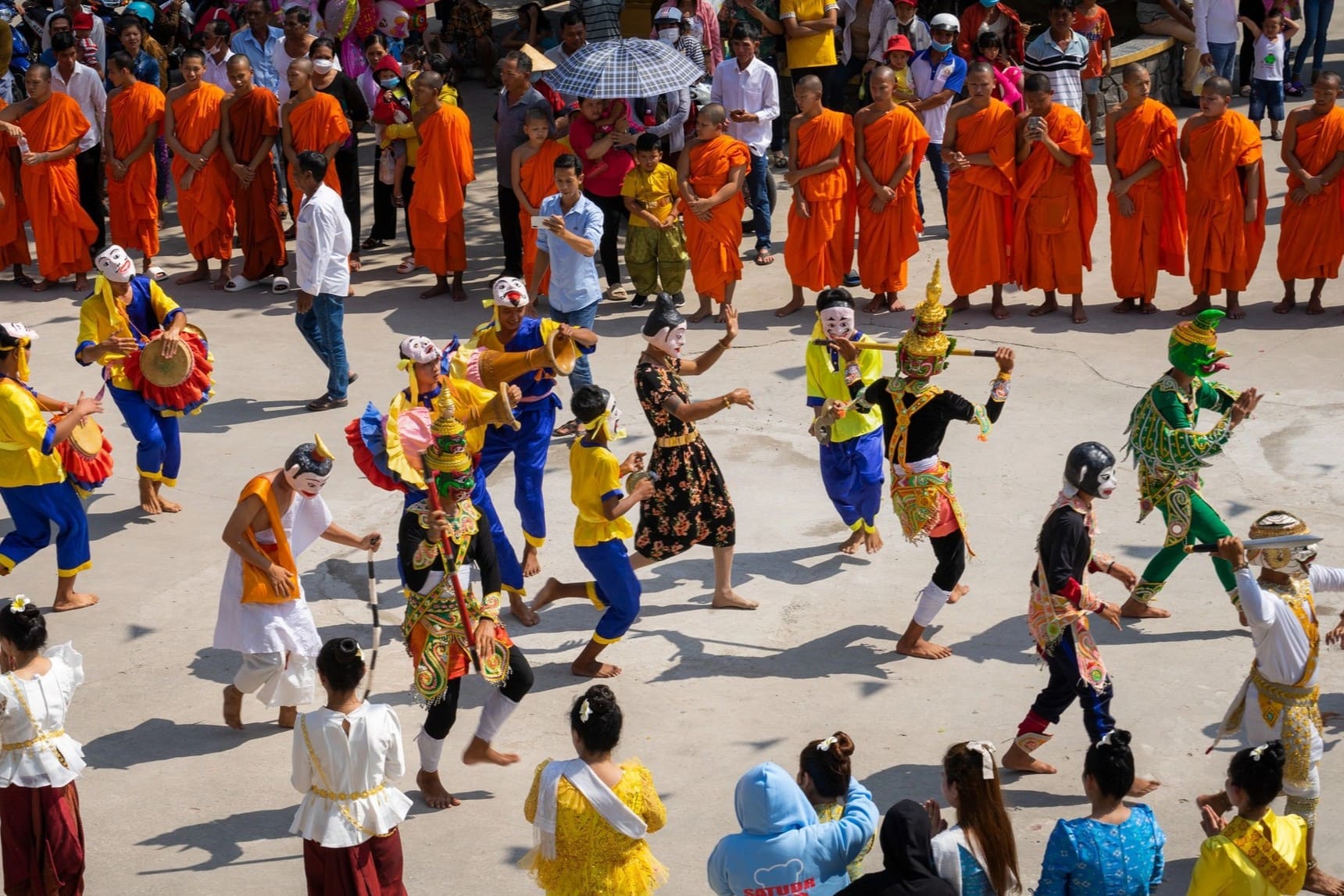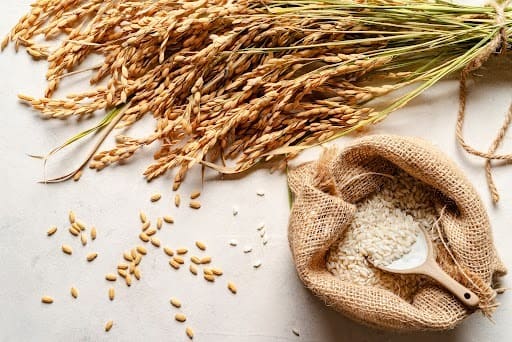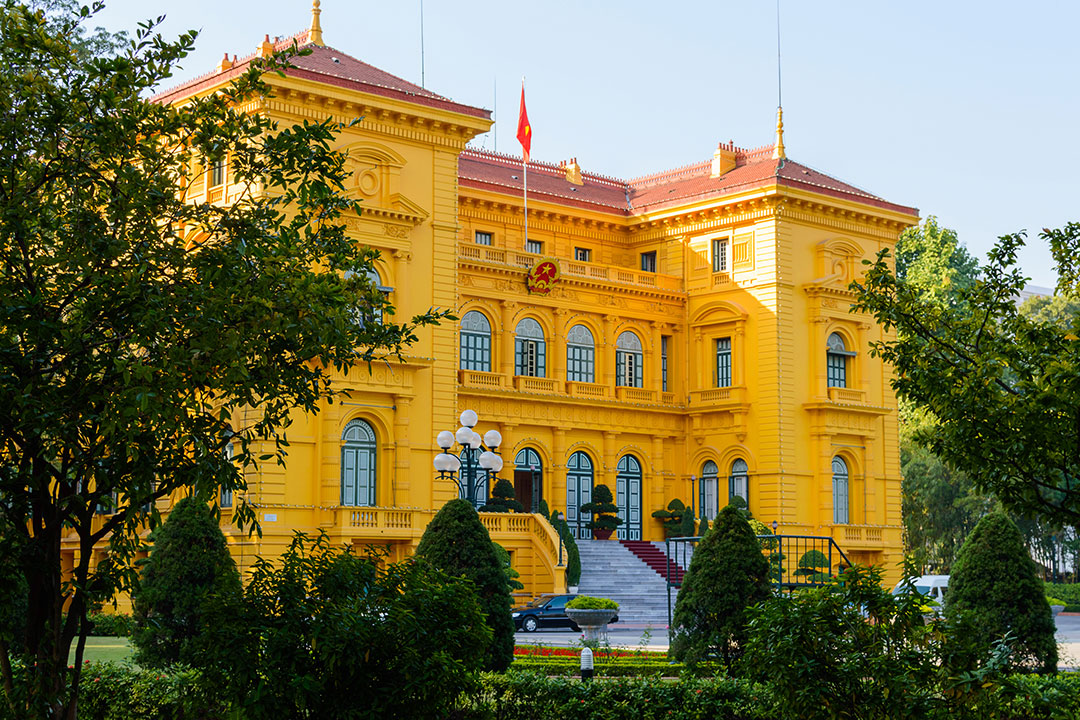Presidential Palace: History, Architecture, Admission Fees & Travel Guide
The Presidential Palace is an iconic symbol of Vietnam's rich political history and French colonial architecture. This magnificent building, situated at the heart of Hanoi city (inside the complex of President Ho Chi Minh), has witnessed significant moments that shaped Vietnam’s journey through both colonization and independence.
History of the Presidential Palace
The Presidential Palace is a monumental building and a significant landmark in the country's political history, deeply rooted in both Vietnamese political history and French colonial architecture. This grand structure was designed during the French colonial period, reflecting the aesthetic principles of the time. Built between 1900 and 1906, it originally served as the residence of the French governor-general in French Indochina, which explains its imposing, yet refined, architectural features. Over time, the Palace became more than just a symbol of colonial power, it evolved into a key site in Vietnam’s struggle for independence and national identity.
Situated near Ba Dinh Square, the Presidential Palace stands in the heart of Hanoi, strategically close to other historical sites such as Ho Chi Minh's residence. The Palace's transformation from a colonial governor's house to a symbol of Vietnam's sovereignty marks a critical moment in the nation's history. After 1954, with the establishment of the Democratic Republic of Vietnam, the Palace became the residence of the Vietnamese president. It was here that major political events and decisions that shaped modern Vietnam took place.

The Presidential Palace is an iconic symbol of Vietnam's rich political history and French colonial architecture
In addition to its political significance, the Presidential Palace also has ties to Ho Chi Minh, Vietnam’s beloved leader. While the Palace itself was not his residence, the nearby Ho Chi Minh Mausoleum complex has become a focal point for anyone looking to understand the life and legacy of Ho Chi Minh. The Presidential Palace Hanoi's history is thus intertwined with Vietnam’s journey from colonization to independence, and its significance continues to this day.
The French colonial architecture of the Presidential Palace is a sight to behold, offering a glimpse into the grandeur of a bygone era. Its elegant design showcases the influence of European styles, which were melded with local traditions, creating a distinctive fusion characteristic of many French Indochina heritage sites.
For those interested in further exploring the French colonial architecture of Hanoi, the Hanoi Opera House is another important landmark that reflects the city's colonial past. It offers a fascinating contrast to the Presidential Palace’s more functional design, showcasing the French architectural influence in a different light.
Architectural features of the Presidential Palace
The Presidential Palace is one of the most striking examples of French colonial architecture in Vietnam. Designed by Auguste Henri Vildieu between 1900 and 1906, the palace exemplifies the Beaux-Arts architectural style, which was widely used for administrative buildings in French Indochina. While its neoclassical elegance reflects European influences, adaptations were made to accommodate Vietnam’s tropical climate.
French colonial design and structural details
The Presidential Palace stands out with its symmetrical layout, grand facade, and ornate detailing, making it a hallmark of colonial-era design. Key architectural elements include:
- Grand facade: The bright yellow exterior is typical of French colonial government buildings, symbolizing power and durability. The color also serves a practical purpose, helping the structure withstand Hanoi’s humidity.
- Neoclassical columns and arches: Tall Corinthian columns adorn the exterior, giving the palace a stately presence, while rounded arches enhance its architectural harmony.
- Ornate balconies and window shutters: Decorative iron railings and wooden shutters are aesthetic features and also aid in ventilation, an essential adaptation for Hanoi’s hot and humid climate.
- Tropical adaptations: Unlike typical European buildings, the palace incorporates high ceilings and wide corridors to promote air circulation, while the surrounding gardens act as a natural cooling system.

The Presidential Palace stands out with its symmetrical layout, grand facade, and ornate detailing
The Presidential Palace
Beyond the palace itself, the surrounding features, structures and landscapes that blend French and Vietnamese influences. It offers a deeper glimpse into Vietnam’s political and architectural heritage.
- Ho Chi Minh’s Stilt House (1958)
In stark contrast to the grand palace, this simple wooden house reflects President Ho Chi Minh’s modest lifestyle. Elevated on stilts following traditional Vietnamese rural architecture, the house is designed for natural ventilation, with an open lower level and minimal furnishings.
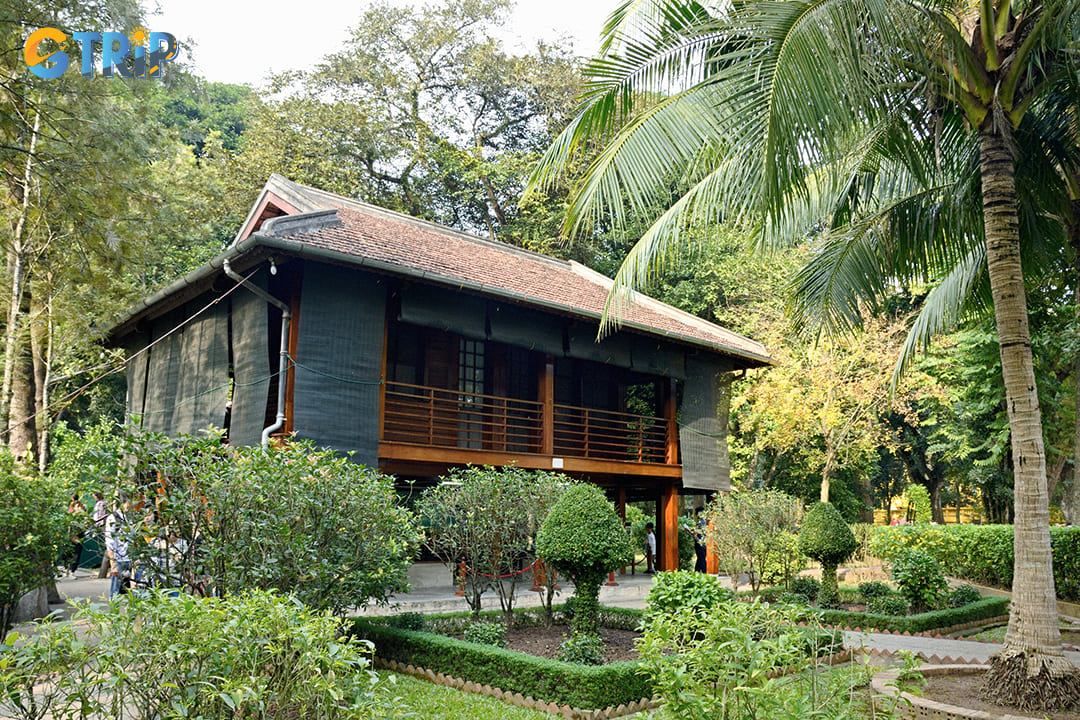
This simple wooden house reflects President Ho Chi Minh’s modest lifestyle
- House No. 67
This single-story building, constructed in the mid-1960s, holds historical significance as the place where Ho Chi Minh spent the last years of his life. Designed with simple, practical architecture, it features a modest interior, with preserved furnishings such as a bed, desk, and medical equipment, reflecting the leader’s humble lifestyle.
- House No. 54
Originally a French colonial-style guesthouse, this residence became Ho Chi Minh’s home from 1954 to 1958 before he moved to the stilt house. With its tiled roof, wooden shutters, and airy layout, House No. 54 showcases architectural elements designed to withstand Hanoi’s tropical climate. Inside, the furniture and personal belongings remain as they were during his residence.
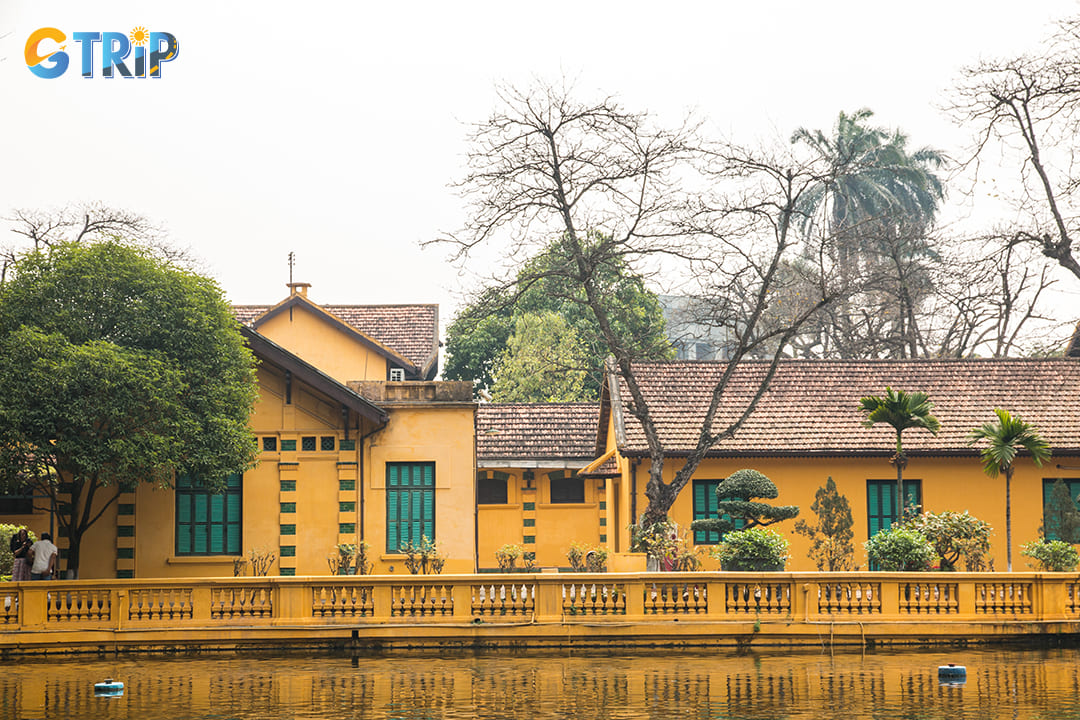
House No. 54 showcases architectural elements designed to withstand Hanoi’s tropical climate
- Mango Street
Named after the lush mango trees that line its path, this scenic walkway connects key buildings within the complex. Flanked by tropical greenery and flowering plants, Mango Street exemplifies the harmonious integration of natural and built environments, providing a tranquil atmosphere that contrasts with the grandeur of the palace.
- Fish pond and botanical garden
A large pond, famously linked to Ho Chi Minh, serves as a tranquil feature within the grounds. The botanical garden, featuring native and imported plant species, enhances the area’s natural beauty while contributing to the site’s ecological balance.

A large pond, famously linked to Ho Chi Minh, serves as a tranquil feature within the grounds
- French colonial-era residences
Smaller colonial-style villas, originally built to house French officials, remain within the complex. These buildings showcase architectural continuity, preserving the site’s historical significance.
- Presidential Office Buildings
The main palace is off-limits to tourists, but the government office buildings showcase similar neoclassical design elements. Grand columns, arched windows, and intricate details reflect Vietnam’s colonial past while linking it to modern governance.
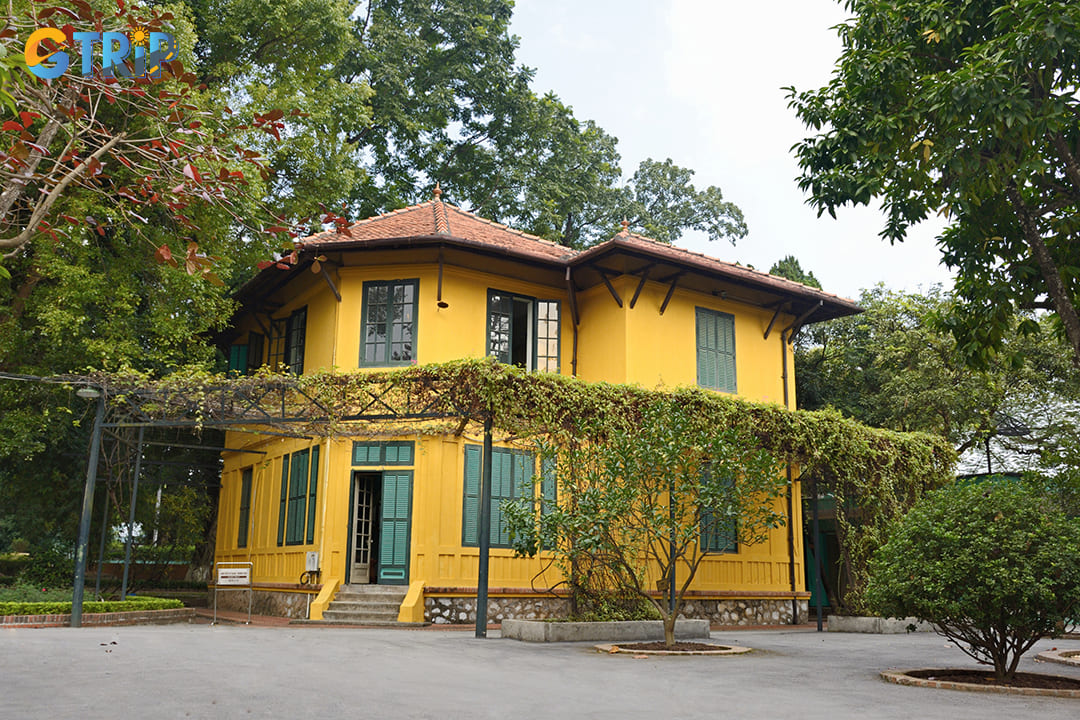
The government office buildings showcase similar neoclassical design elements
- Exhibition of medical equipment used for treating President Ho Chi Minh
This exhibition displays the medical instruments used in President Ho Chi Minh’s treatment from August 24 to September 2, 1969. Originally built in May 1958 as a Politburo rest area, the room became a medical consultation space during his final days.
The exhibit features a blood pressure monitor, stethoscope, oxygen tank, and other medical tools, reflecting the dedication of the doctors who cared for him. Preserving these artifacts honors President Ho Chi Minh and highlights the ethical duty of the medical profession.

This exhibition displays the medical instruments used in President Ho Chi Minh’s treatment
4 things to do when visiting the Presidential Palace
Exploring the Presidential Palace offers a glimpse into Vietnam’s history and culture. The site blends architectural elegance, lush landscapes, and historical landmarks, making it a must-visit destination. Here are five activities that showcase the area’s unique charm:
1. Visit Ho Chi Minh’s Stilt House
Ho Chi Minh’s Stilt House was inaugurated on May 17, 1958, to commemorate his 68th birthday. Nestled beneath lush green trees behind the Presidential Palace, the house is surrounded by hibiscus hedges and a welcoming gate woven from intertwined branches. Located in the heart of a peaceful garden, it stands as a symbol of his simple and humble lifestyle.
This was where President Ho Chi Minh lived and worked the longest during his revolutionary years. It also served as a place to receive foreign leaders, political delegations, and millions of visitors from across Vietnam and the world. Designed in the style of ethnic stilt houses, the structure measures 10.5 meters in length and 6.2 meters in width. It has two floors: the ground floor housed his summer workspace, Politburo meetings, and informal gatherings, while the upper floor consists of two modest 10-square-meter rooms for rest and work.

The study holds a wooden desk, a typewriter, and shelves of books, reflecting Ho Chi Minh’s love for reading and writing
You can observe personal artifacts like notebooks, pens, and glasses, preserved as they were during his lifetime. Outside the house, a narrow staircase leads to a small balcony where Ho Chi Minh often stood to address guests and officials. The surrounding garden, with its neatly trimmed bushes and flowering plants, creates a peaceful atmosphere, reflecting the leader’s appreciation for nature.
2. Explore House No. 54 and House No. 67
Adjacent to the Stilt House are House No. 54 and House No. 67, both holding historical significance. House No. 54 is a modest, yellow-painted building where Ho Chi Minh lived from 1954 to 1958 after the Vietnamese victory at Dien Bien Phu. Inside, you can see his daily essentials, including a simple iron bed, a wooden desk, and a rotary telephone used for official communications. A vintage car, gifted to him by the Soviet Union, is displayed nearby, highlighting international support during Vietnam’s struggle for independence.
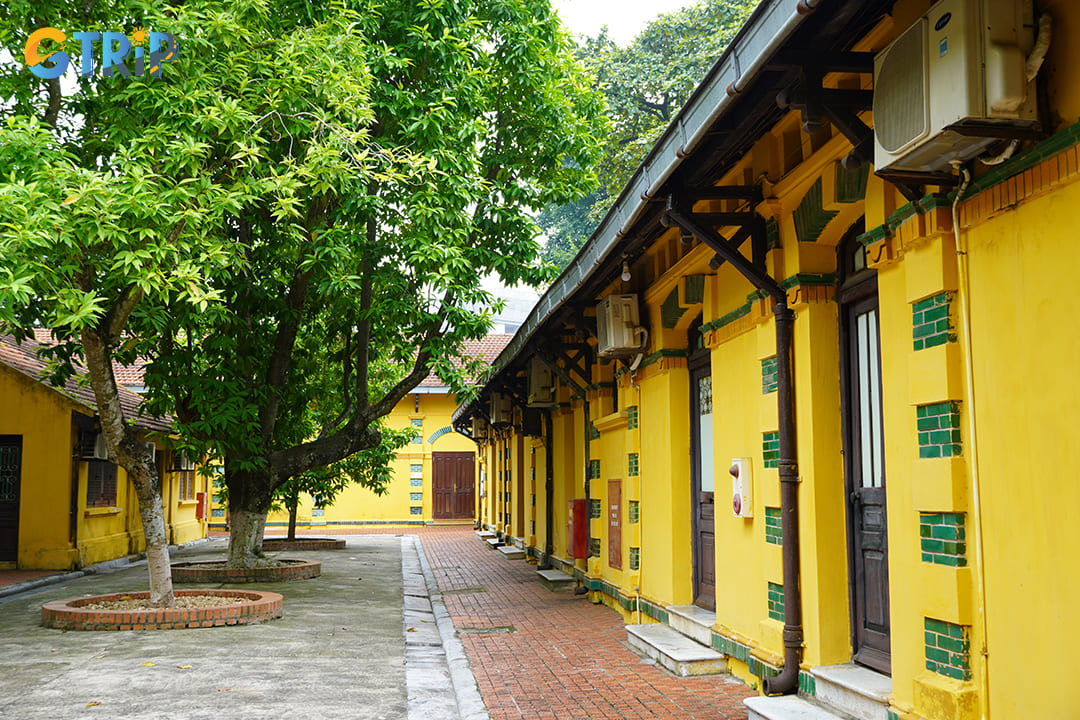
House No. 54 is a modest, yellow-painted building where Ho Chi Minh lived from 1954 to 1958
House No. 67
Built in 1967, House No. 67 was reinforced with thick walls and a bomb-resistant roof to withstand airstrikes. It served as the meeting place for President Ho Chi Minh and the Politburo during the escalation of the U.S. bombing campaign in the North (1967-1969). This was also where he received medical treatment and passed away. Today, nearly 100 original documents and artifacts remain carefully preserved in their original arrangement. Notably, the clock on the small cabinet beside his bed and the wall calendar are forever stopped at the moment of his passing: 9:47 AM, September 2, 1969.
3. Discover the botanical garden in the
The botanical garden within the Presidential Palace Historical Site is a serene and lush green space that reflects President Ho Chi Minh’s deep love for nature. The garden is home to a diverse range of plants, including ancient trees, flowering species, and several rare plants gifted by international leaders. Towering banyan trees, fragrant frangipanis, and a pomelo tree personally planted by President Ho Chi Minh during his lifetime contribute to the garden’s tranquil ambiance. The well-maintained pathways lead tourists through shaded areas, offering a peaceful retreat in the heart of the bustling capital.
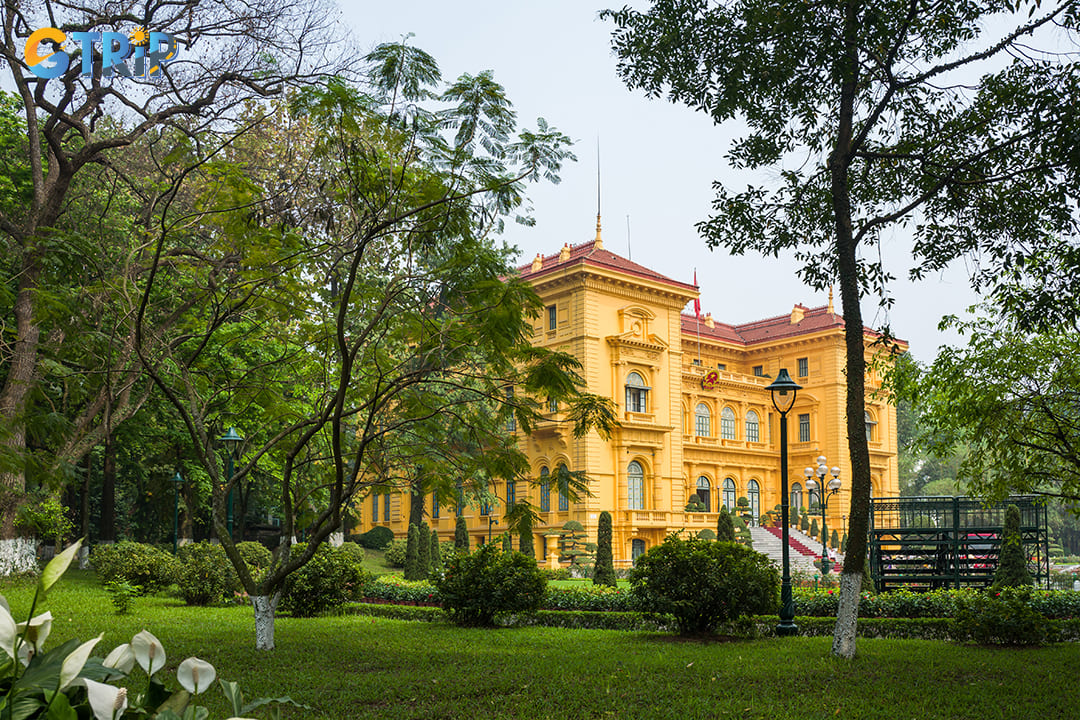
The botanical garden is a serene and lush green space that reflects President Ho Chi Minh’s deep love for nature
Beyond its natural beauty, the garden holds significant historical and cultural value. It surrounds the stilt house where President Ho Chi Minh lived and worked, serving as a living reminder of his simple lifestyle and strong connection with nature. A picturesque fish pond, where he often spent time feeding the fish, adds to the charm of the site. Today, the garden remains a key attraction for people who wish to explore the political legacy of Ho Chi Minh and his personal philosophy of harmony with nature.
4. Capture stunning photographs of the
The Presidential Palace offers numerous opportunities for photography enthusiasts, thanks to its blend of historical architecture, lush gardens, and tranquil water features. Begin by capturing the grandeur of the Presidential Palace itself, with its vibrant yellow facade, French colonial design, and symmetrical layout. The contrasting green shutters and red-tiled roof add depth and character to each shot.
Moving to Ho Chi Minh's stilt house, photographers can focus on the simplicity of the wooden structure, surrounded by lush greenery. Capture details like the narrow balcony, traditional furniture, and personal artifacts to tell the story of Ho Chi Minh’s life. Use natural light to highlight the textures of wood and foliage, especially during the golden hour when soft sunlight creates a warm atmosphere.
Along Mango Street, the canopy of mango trees provides excellent framing for photographs. Experiment with different angles to capture the interplay of light and shadows on the stone pathway. In the Botanical Garden, macro photography enthusiasts can focus on vibrant flowers like hibiscus and lotus blossoms, while wildlife photographers may spot birds and squirrels among the trees. The garden’s ponds, reflecting the sky and surrounding trees, offer beautiful compositions for landscape photography.
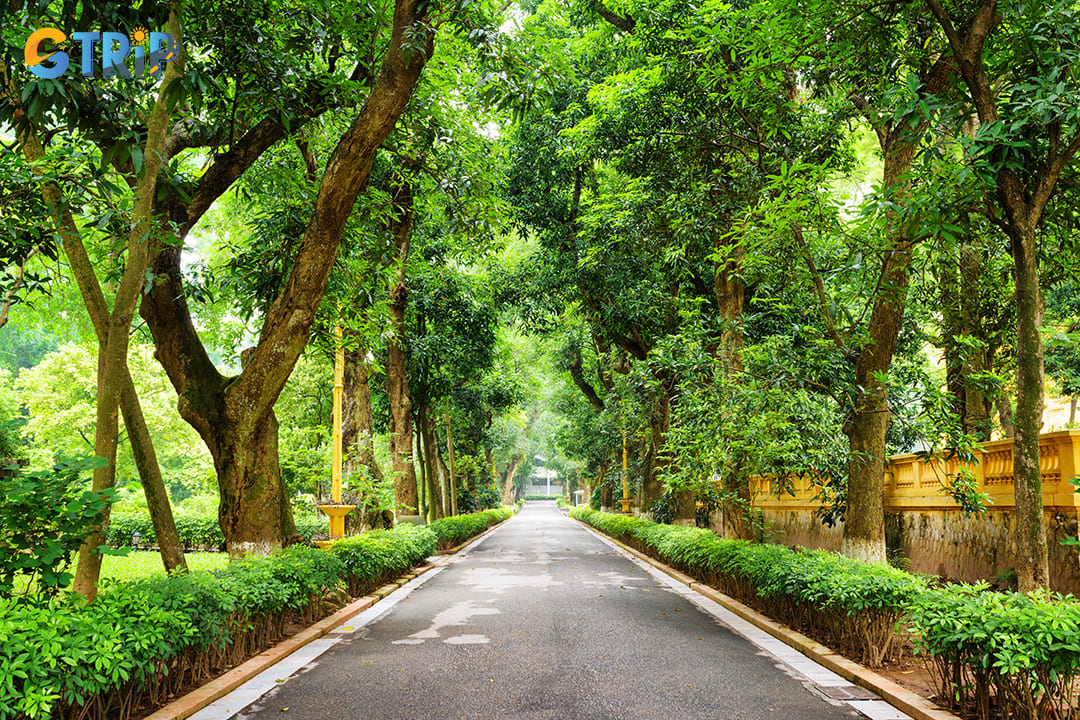
Along Mango Street, the canopy of mango trees provides excellent framing for photographs
Admission fees for the Presidential Palace
Visiting the Presidential Palace requires a valid entry ticket, with specific fees set for different tourist categories. While the main Presidential Palace entry fee covers access to the surrounding gardens and Ho Chi Minh’s Stilt House, the main palace building itself remains off-limits to the public.
Ticket prices and categories
- Standard admission: The general entrance fee for international visitors is typically around 40,000 VND per person.
- Free entry: Vietnamese citizens.
Prices are subject to change, so it's advisable to check in advance before planning your visit. You should also note that tickets are only available for purchase on-site at the official entrance gate, with cash being the preferred payment method.
Additional costs and tour options
For those looking for a deeper understanding of the site’s history, guided tours of the Presidential Palace can be arranged through licensed tour operators. Some tour packages may also bundle the Ho Chi Minh Mausoleum, allowing seamless access to multiple landmarks in a single visit.
Visiting regulations and timings
The palace follows strict visiting hours, usually operating from 7:00 AM to 4:00 PM. It is closed on Saturday and Sunday. The opening time for Ho Chi Minh Stilt’s House is open from 7:30 -11:00 AM daily. In the afternoon, it operates from 1:30 - 4:00 PM on all days except Monday, when it only opens in the morning. You are advised to arrive early, as queues can be long, especially during peak tourist seasons.
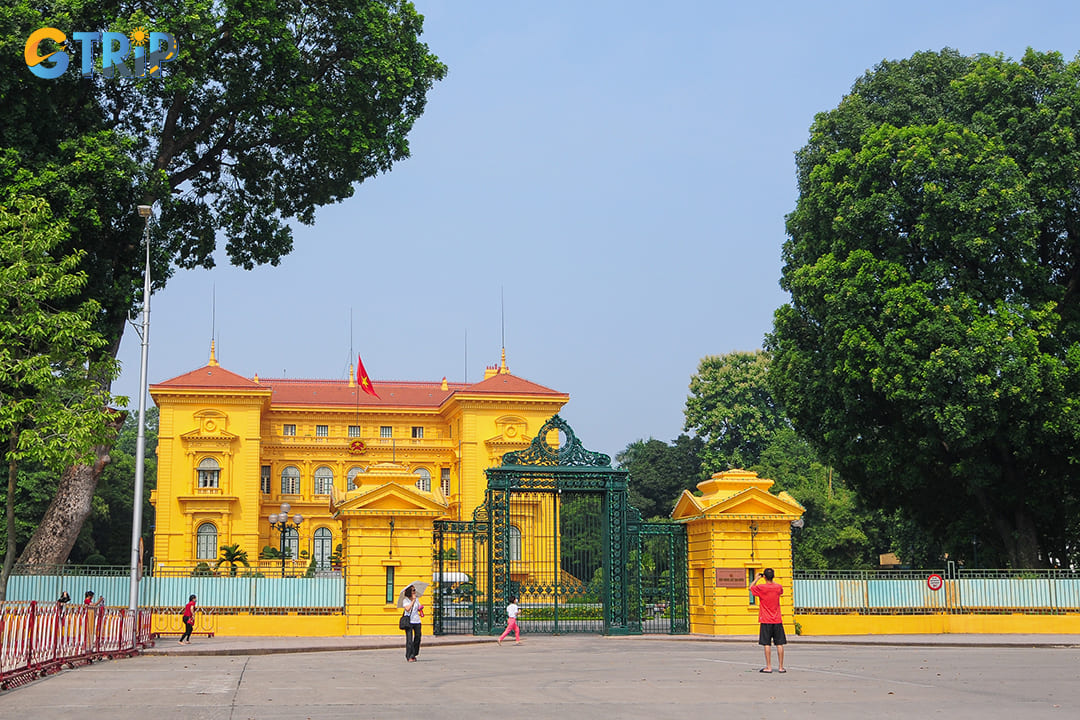
Visiting the Presidential Palace requires a valid entry ticket
How to get to the Presidential Palace in Hanoi?
The Presidential Palace is in the Ba Dinh District, a central area rich in political and cultural significance. Its location makes it easily accessible from various parts of Hanoi, whether by taxi, motorbike, or public transport.
By public bus
For budget travelers, Hanoi’s bus system offers an economical option. Several bus routes pass near the Presidential Palace Hanoi, including:
- Bus 09 (Hoan Kiem Lake - Ho Tay)
- Bus 22 (Gia Lam Bus Station - Kim Ma)
- Bus 45 (Times City - Tran Khanh Du - Kim Ma)
The nearest bus stop is within a short walking distance from Ba Dinh Square, allowing easy access to the palace.
By taxi or ride-hailing services
Taxis and ride-hailing services like Grab are the most convenient ways to reach the Presidential Palace. Since it's a well-known location, drivers will easily recognize the destination. The journey from Hanoi’s Old Quarter typically takes around 10 - 15 minutes, depending on traffic conditions.
By motorbike or bicycle
Hanoi’s compact streets make motorbikes and bicycles an efficient way to navigate the city. Tourists can rent a motorbike for flexible travel or join cycling tours that explore cultural landmarks like the Ngoc Son Temple, providing a deeper insight into Hanoi’s historical sites.
Walking from Ba Dinh Square
For those already visiting Ba Dinh Square or the Ho Chi Minh Mausoleum, the Presidential Palace is just a short walk away. Exploring this area on foot allows travelers to appreciate the grand architecture and peaceful atmosphere of the surroundings.
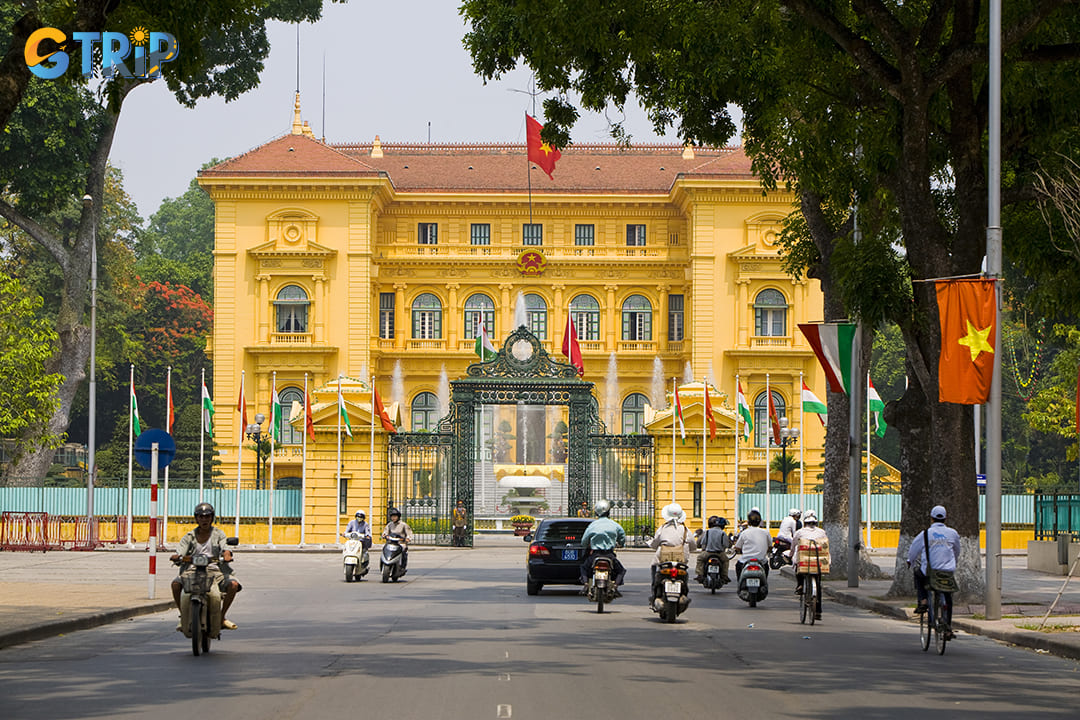
The palace’s location makes it easily accessible from various parts of Hanoi
Nearby attractions to visit around the Presidential Palace
Located in the heart of Hanoi, the Presidential Palace is surrounded by a wealth of Hanoi cultural attractions that offer deeper insights into Vietnam’s history and heritage. Tourists exploring the area can extend their itinerary to include several significant landmarks.
Ba Dinh Square
As the largest square in the city, Ba Dinh Square holds immense historical importance. This is where President Ho Chi Minh declared Vietnam’s independence in 1945, marking the birth of the Democratic Republic of Vietnam. Today, the vast open space is used for national events and military parades, while people often stop by to witness the daily flag-raising and lowering ceremonies, which reflect Vietnam’s patriotic spirit.
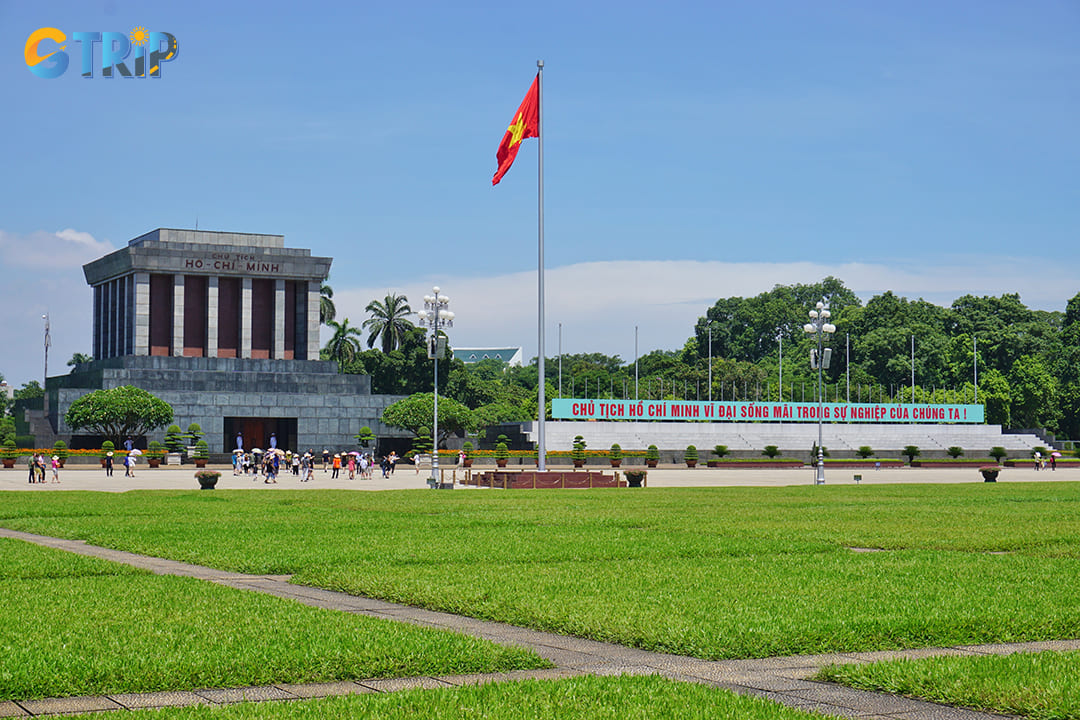
Ba Dinh Square holds immense historical importance
Ho Chi Minh Mausoleum
A short walk from the Presidential Palace, the Ho Chi Minh Mausoleum is a must-visit for those interested in Vietnamese history. The mausoleum houses the embalmed body of Ho Chi Minh and serves as a solemn tribute to the country's beloved leader. Nearby, the stilt house where Ho Chi Minh lived offers a glimpse into his simple lifestyle, while the One Pillar Pagoda, a unique Buddhist structure, adds a spiritual dimension to the visit.
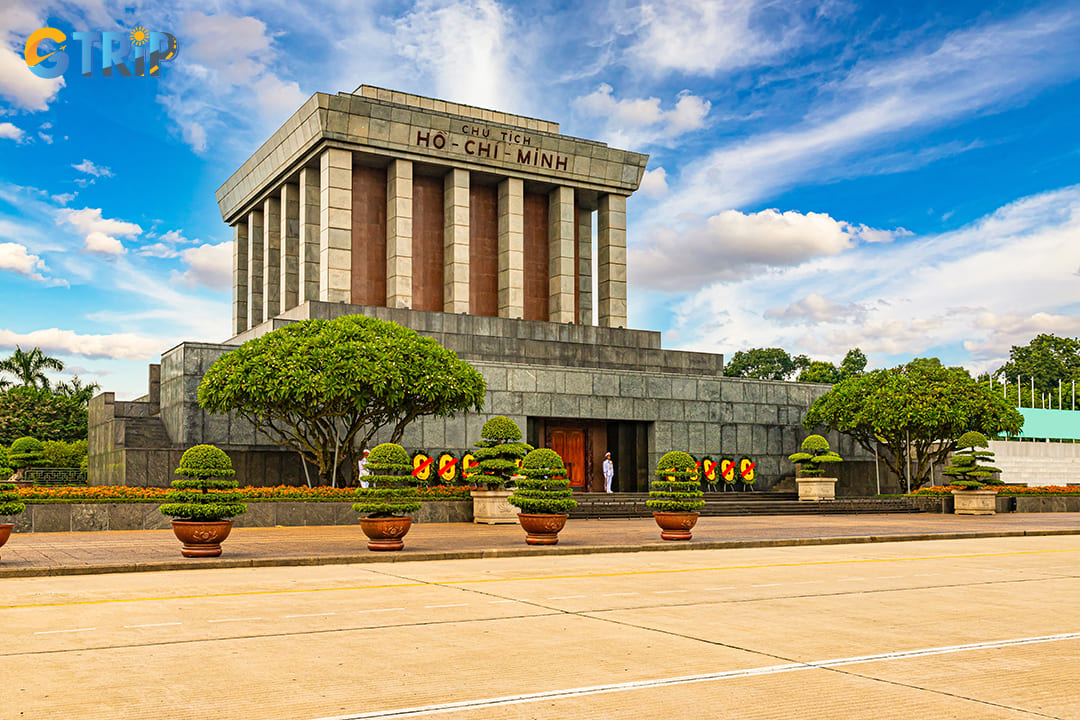
The Ho Chi Minh Mausoleum is a must-visit for those interested in Vietnamese history
Ngoc Son Temple
For those who want to blend history with a scenic experience, the Ngoc Son Temple is an excellent choice. Situated on a small island in Hoan Kiem Lake, this temple is dedicated to General Tran Hung Dao, a national hero. You can cross the striking red bridge leading to the temple, where they will find ancient artifacts and panoramic views of the surrounding lake. The temple’s proximity to the Old Quarter also makes it easy to explore Hanoi’s bustling streets afterward. Learn more about this cultural landmark at Ngoc Son Temple.

You can cross the striking red bridge leading to the temple
Frequently asked questions about the Presidential Palace
- Can tourists visit the Presidential Palace?
The Presidential Palace is not open to the public for full access, as the building serves as an official government facility. However, you can explore the surrounding areas, including Ho Chi Minh’s Stilt House, the lush gardens, and historical exhibits within the. Guided tours provide insights into the site's history, highlighting its role in Vietnam’s political landscape.
- What is the dress code for visiting the site?
As a government institution with historical significance, you should dress modestly. Avoid wearing shorts, sleeveless tops, or overly casual attire, as respectful dress codes are encouraged at Vietnamese cultural and political landmarks.
- Can I visit the Presidential Palace on a national holiday?
The Presidential Palace remains open on most national holidays, but official government events may restrict access to certain areas. It is recommended to check ahead if planning a visit during major holidays such as Vietnam’s National Day (September 2) Tet (Lunar New Year), Labor’s Day (May 1), and National Day (April 30).
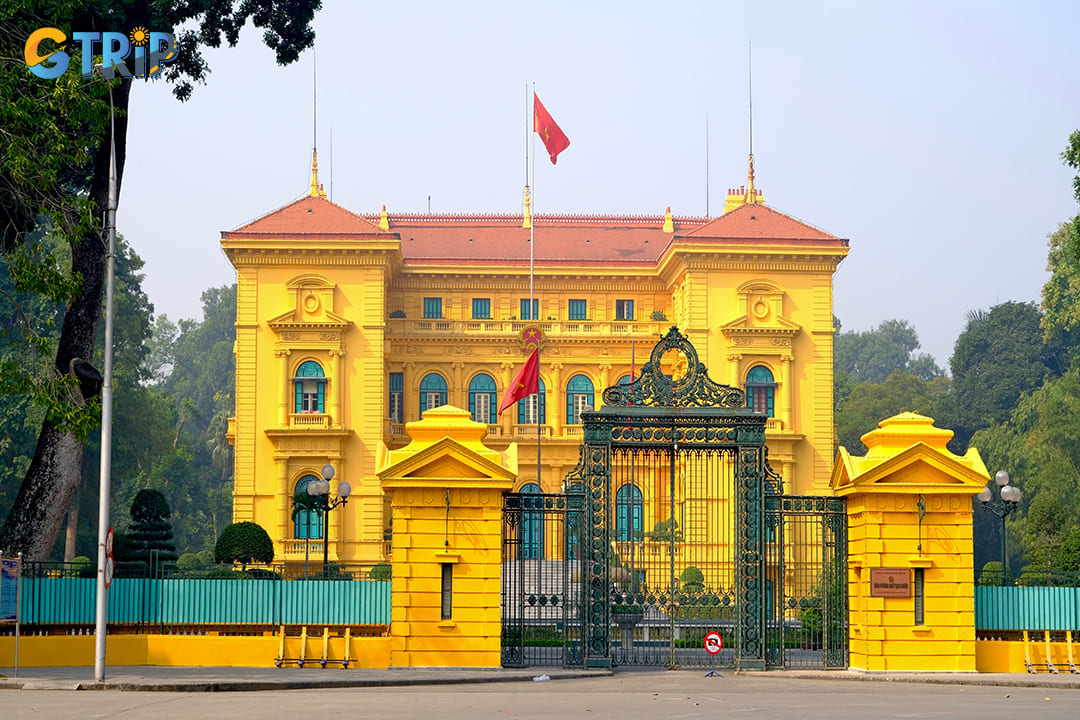
The Presidential Palace remains open on most national holidays
The Presidential Palace stands as a testament to Vietnam’s political history, French colonial architecture, and government institutions. Exploring this landmark provides a deeper understanding of Vietnam’s cultural heritage and its connection to significant historical events. For travelers planning a comprehensive journey through Vietnam’s capital, consider exploring our curated Hanoi Tours with GTrip - Vietnam Travel Agency. Our expertly crafted itineraries ensure you experience Hanoi’s rich history, iconic landmarks, and cultural depth in the most engaging way.

